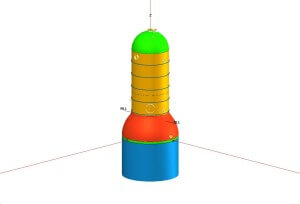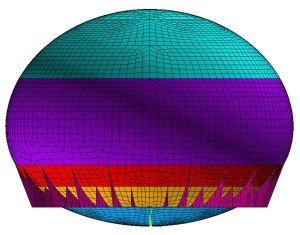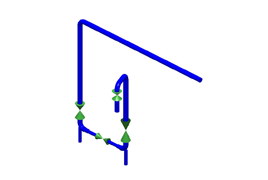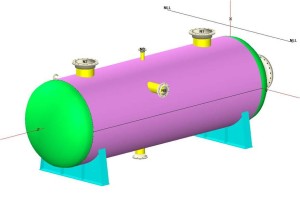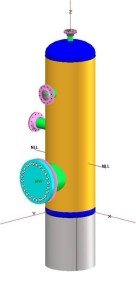The vessel V-109B had almost no information in the files.
The vessel dimensions, nozzle measurements, inspection thickness values and photographs etc. were provided by the plant.
The following assumptions were made for proceeding with vessel certification:
- The shell material was not known. This was assumed to be SA-285 Grade C.
- The support saddle material was also unknown. This was assumed to be SA-285 Grade C.
- The design pressure of the vessel was not known. The operating temperature was 175 °F and the design temperature was given by the plant as 300 °F.
- No radiography details are available for the vessel. For shell seams, “NO RADIOGRAPHY” was assumed for the ASME code calculations.
An engineering analysis was performed to establish a vessel MAWP and MAEP.
The pressure Vessel calculations were performed for a small starting pressure and were incrementally increased till the thickness values obtained by pressure calculations were just below the measured thickness values. We ensured that there was a built in corrosion allowance for future operation. The MAWP was found to be approximately 120 psig. Thus, the final vessel calculations were performed for 120 psig @ 300 °F. The MAEP was established as 6 psi @ 300 °F.
The nozzles of the vessel were also found to be adequately reinforced for this set of design conditions.
Thus, the vessel was established to be having MAWP of 120 psig (INT.) / 6 psi (EXT.) @ 300 °F.
It was recommended that the plant should evaluate the relief system scenario to make sure that there is adequate relief capacity. It was recommended that after successful evaluation of the relief system, the plant should generate a nameplate with the above set of design parameters and attach it to the vessel. This completed the process of Pressure Vessel Equipment Certification process for this vessel.




